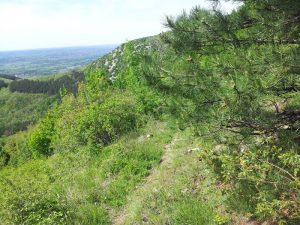Petrovac na Mlavi
Flora and fauna
Petrovac na Mlavi
Flora and fauna
Different geological composition, terrain configuration, climatic conditions, representation of numerous pedological units and many other natural factors have caused heterogeneity in floristic composition. Man also played a significant role in changing the natural area.
 250 years ago, forests covered a large area in the entire area of
Mlava, even the grain-bearing Stig was under the forest ecosystem.
Along with the increase in population, the percentage of the territory
of forest communities was decreasing. Today, the forests in the
Petrovac municipality remain on the slopes of the Homolje
mountains, where they are interwoven with meadows and pastures
create an image of the preserved natural environment. The main
species of forest plant communities with accompanying subspecies
are softwood forests with admixtures of lowland species of oak, ash,
elm, birch, chub and other accompanying species. These plant
communities are abundantly accompanied by various types of shrubs
and all types of forest fruits. The lower parts are under arable land.
250 years ago, forests covered a large area in the entire area of
Mlava, even the grain-bearing Stig was under the forest ecosystem.
Along with the increase in population, the percentage of the territory
of forest communities was decreasing. Today, the forests in the
Petrovac municipality remain on the slopes of the Homolje
mountains, where they are interwoven with meadows and pastures
create an image of the preserved natural environment. The main
species of forest plant communities with accompanying subspecies
are softwood forests with admixtures of lowland species of oak, ash,
elm, birch, chub and other accompanying species. These plant
communities are abundantly accompanied by various types of shrubs
and all types of forest fruits. The lower parts are under arable land.
This area is rich in diverse wildlife, the distribution of which depends on the natural conditions of certain parts of the area, however, there are no significant differences between the lowest and highest limits. Due to the cultivation of the territory, the venison was pushed to the grass and forest terrains, which limited the habitats of many species. Various animal species live in deciduous forests, meadows, fields, orchards, vineyards, gardens, streams and ponds. Here are deer, rabbit, squirrel, forest mouse, dormouse, hedgehog, mole, skunk, weasel, fox, badger. During the rainy years, this area is also inhabited by the byzantine rat, and when the winters are very cold and snowy, packs of wolves and herds of wild boars descend into the area of the village. There are also various species of birds - pond birds (stork, beech, gray heron, black coot, pond hen, wild capercaillie), hens (pheasant, partridge, quail), various species of pigeons, woodpeckers, diurnal and nocturnal predators…
The diverse flora and fauna of this part of Serbia provides good bases for the development of hunting tourism, but also for the affirmation of numerous manifestations, which already exist, or could exist, and are related to nature and it’s riches.

